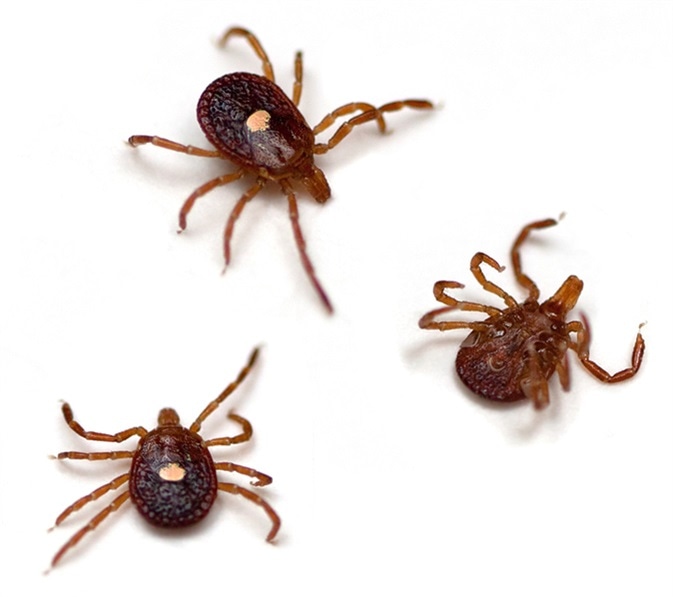Heartland virus is a recently discovered Phlebovirus that was initially isolated from two farmers residing in northwestern Missouri hospitalized with fever, thrombocytopenia (low number of platelets) and leukopenia (low number of white blood cells) in 2009.
According to their clinical findings and disclosed exposures, ticks were immediately implicated in this novel disease.
After the virus was discovered, the U.S. Centers for Disease Control and Prevention (CDC) got in contact with various state-wide stakeholders in order to elucidate its ecology and transmission modalities, and also to create diagnostic tests and discover possible additional cases of the disease in question.
From Biology to Taxonomy
Heartland virus is now considered an emerging human pathogen from the genus Phlebovirus that is grouped within the newly established family Phenuiviridae and order Bunyavirales. From the genetic standpoint, Heartland virus is closely linked to severe fever with thrombocytopenia syndrome virus, which is transmitted by ticks and which causes high fever, leukopenia and thrombocytopenia, disseminated intravascular coagulopathy, and signs of central nervous and gastrointestinal involvement.
Despite such genetic similarities, recent taxonomic proposals reclassified severe fever with thrombocytopenia syndrome virus to a novel genus Banyangvirus. These taxonomic revisions of bunyaviruses are supported by family-specific arrangements of viral subunits during the fusogenic process observed in the infected cell.
More specifically, Heartland virus contains a Gc protein, with a fusion function that facilitates virus entry into the cell of an infected host. When the structure of this protein was compared with recently solved structures of other bunyaviruses, it was concluded that Gc proteins display characteristic family specificity, in line with the reclassification of viral agents by the International Committee on Taxonomy of Viruses (ICTV).
Comparisons between the biological forms of Gc seen after membrane fusion takes place have shown that N-linked glycosylation, domain III orientation and interprotomer interaction exhibit family specificity. With the Heartland virus, the Gc ectodomain displays a post-fusion trimeric conformation.
Transmission Patterns
CDC researchers showed in 2013 that Amblyomma americanum (also known as the Lone Star Tick) is the main vector for the Heartland virus, which in turn infects humans. Further work continues to identify the reservoir host, as some serological studies have found antibodies to Heartland virus in raccoons and white-tailed deer.

Lone Star Ticks (Amblyomma americanum). Image Credit: Melinda Fawver / Shutterstock
A retrospective study conducted in 2015 by employing convenience sampling of various wild animal sera (primarily from raccoons, coyotes, deer and moose) found antibodies against Heartland virus. These animals lived in thirteen U.S. states, and the animals could have been infected as early as 2003 (based on the estimated ages of the affected animals). Since Amblyomma americanum was not present in some of the states in the New England region, there is a possibility that a second type of tick can also carry the virus.
Heartland virus has been isolated from deplete nymphs, which were apparently infected as larvae by feeding on a viremic vertebrate host. In the ticks, transovarial transmission is thought to be a pivotal strategy for the endemic maintenance of the Heartland virus. And it is not characteristic only for this viral agent, as it has been described in a plethora of phleboviruses – including those that are transmitted by sandflies.
On the other hand, transmission of the Heartland virus from nymphs to co-feeding larvae can also be seen, but it is not considered to be an efficacious strategy for its maintenance. Furthermore, the exact geographic range of Heartland virus activity is unknown.
In any case, such tick versatility and large number of potential reservoirs results in continuing transmission hazard for humans. Therefore, further work is required to establish whether vertical transmission alone accounts for Heartland virus persistence in tick populations, or if there is a need for an amplifier vertebrate host. In addition, other tick species (or even other arthropods) may become infected with the virus and transmit it within other natural systems.
Further Reading
Last Updated: Nov 26, 2018